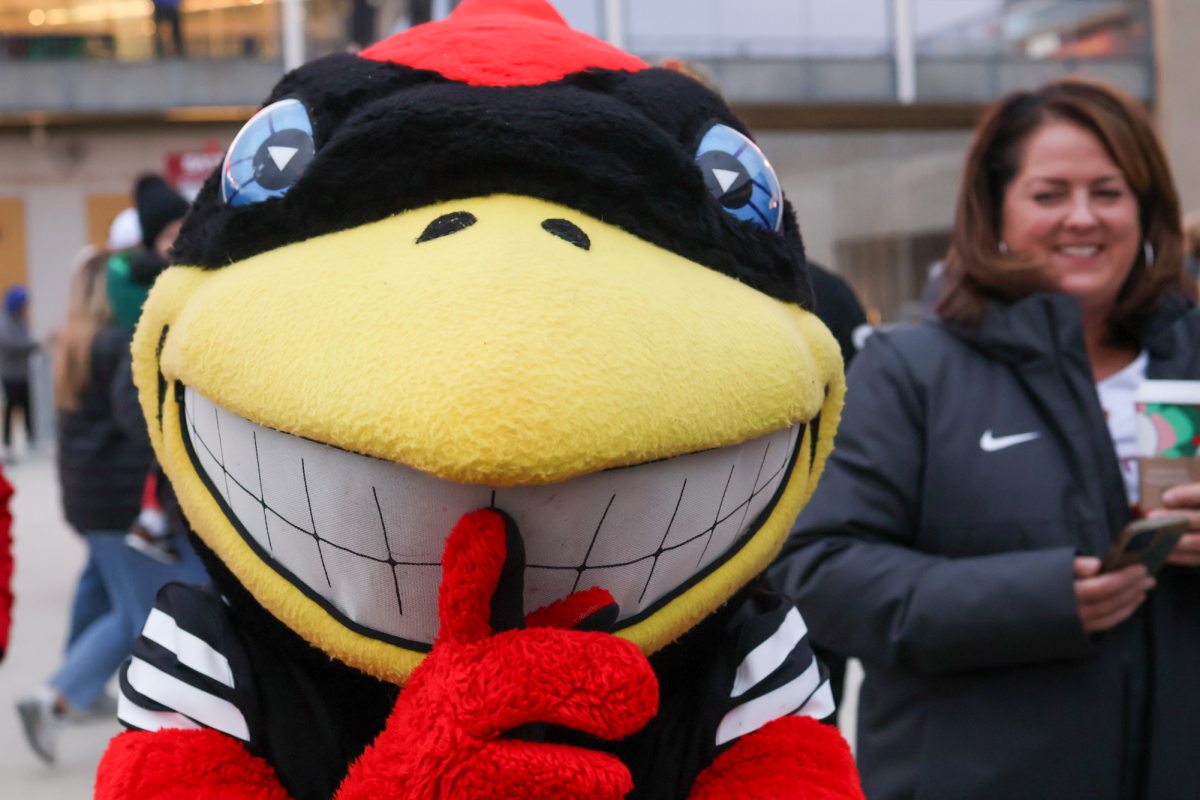In the fold
April 30, 2003
His hands move quickly, folding the square piece of paper. In seconds, a butterfly appears where a brightly colored piece of paper once was.
“It’s just seven steps,” he says. “Most important is a good crease.”
He takes out another piece of paper and hands me one. “Here,” he says.
Step-by-step, Yong-Lak Park, graduate student in entomology, shows a dumbfounded reporter how to turn a piece of paper into a butterfly. In less than five minutes, I have a version of Park’s butterfly in front of me, though not quite as nice as his.
The butterfly I have made is nothing compared to the 33 insects Park designed, calculated and folded over the course of four years, all of which are now on display in the butterfly house of Reiman Gardens.
“It takes three months to fold one insect,” Park says. “Two-and-a-half months to design and calculate the insect and one week to fold it.”
Each insect on display at Reiman Gardens looks like a paper version of the real thing: houseflies, a stinkbug and lightning bugs — each with the exact proportions of its real-life counterpart.
Park says he learned origami in his elementary math classes in his native country of South Korea.
“My teacher taught me how to divide with origami,” Park says.
He grabs a piece of paper and makes several creases.
“Do you see one-third?” Park asks.
I nod, and he points out several other fractions. Five-eighths, three-eighths, and others appear on the piece of origami paper.
Park says the connection between math and origami extends into the design of his insects. Using insect physiology, Park looked at the general shape of the insect and devised the design of his origami insect in his head.
He kept every design inside his head until he was ready to fold, Park says.
Origami evolved into a hobby after some time, and Park spent most of his time on unit origami, which involves using multiple pieces of paper to create a finished shape.
Park says it was not until he came to Iowa State in 1999 that he started to fold insects. When his colleagues in the entomology department began noticing his hobby, they encouraged him to display his talents to others.
Marlin Rice, professor of entomology, was one who encouraged Park.
“I was in his office one day and I noticed he had a variety of origami insects sitting on the partition above his desk,” Rice says. “I was completely stunned by the intricacy of the detail and variety of insects he had created.”
Rice says he encouraged Park to display the insects where people who had never been exposed to origami would see them.
“I think it’s a great thing that he is sharing his culture,” Rice says.
Park says he had help from his wife, Seon-Hye, who is a professionally certified origamist and a biologist, with the project. He says she showed him how to create all of the flowers in his exhibit.
But folding insects, which Park says is the most difficult form of origami, is much different from folding flowers.
“It takes more time and is more delicate,” Parks says. “[Flowers are] all symmetric — keep folding one way and you get a flower.”
The display at Reiman Gardens is not all Park’s work. The large displays of multiple butterflies and dragonflies were created by a team of 25 graduate and undergraduate entomology students and their families.
“They made 2,500 [butterflies and dragonflies] so far,” he says. “They learned quickly.”
Park says he tries to teach everybody he sees how to at least fold a butterfly, and the 25 people involved with the project represent part of the cultural exchange idea that is central to his display.
“The purpose of this exhibition is introducing origami, and my culture, to Iowa,” Park says.
In addition to teaching his coworkers how to create art from his own culture, interacting with Americans has also taught him several cultural lessons as well. During the creation of an exhibit displaying houseflies perched on top of a cheeseburger, his assistants had to teach him the proper method of sandwich stacking.
“I knew how to make a cheeseburger, but I didn’t know how to stack [the ingredients],” he says. “Some of my folders had experience — they knew from McDonald’s.”
Park says the cheeseburger incident is an excellent example of differences between cultures that can be overcome through communication.
“They explained why they stack them that way,” Parks says with a laugh. “It’s simple, but international students may not understand.”






